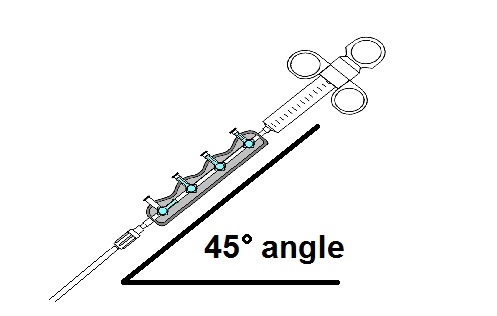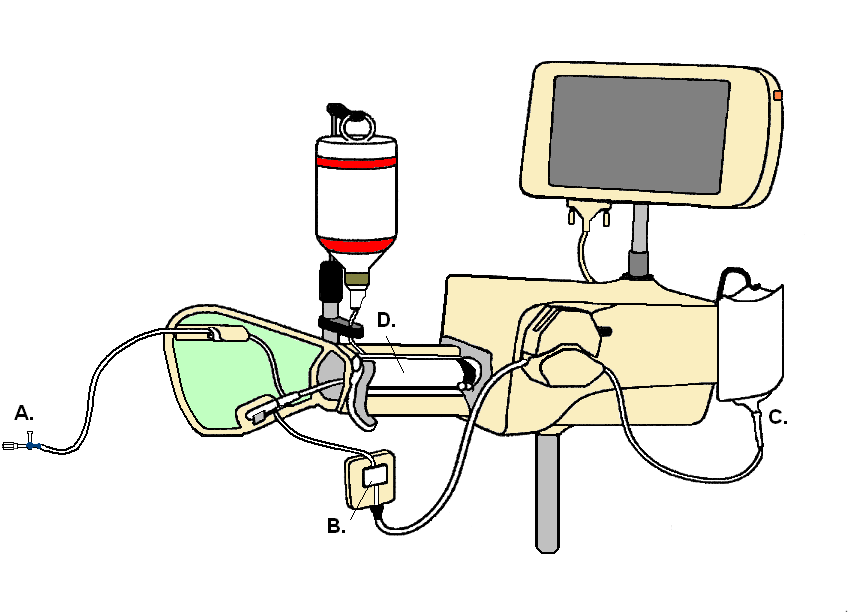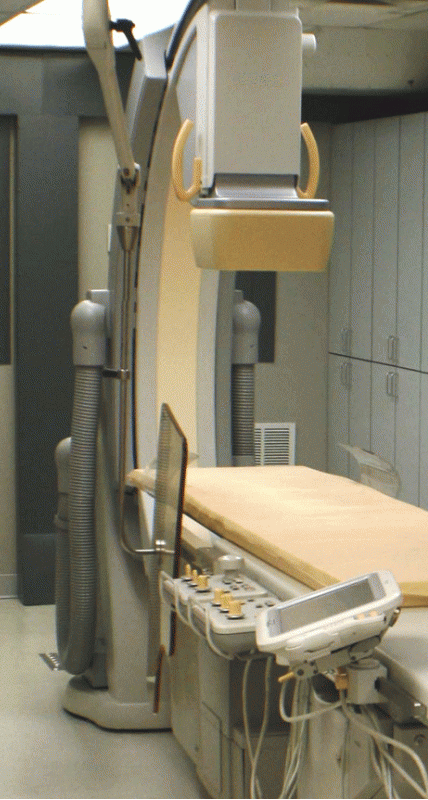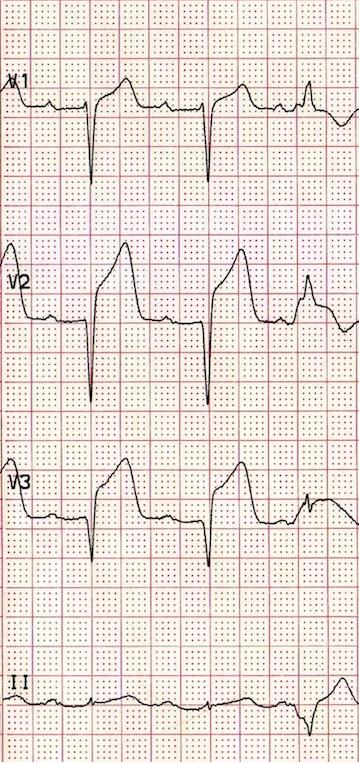Coronary Angiography
In order to view the coronary arteries, contrast media must be injected through the catheter. Contrast can be injected the manual technique with a 3 or 4-bar manifold. Mechanical injectors are also available coronary and ventricular angiography.
The manual manifold may be a 3 or 4 bar system of stop-cocks used for manual operation or a powered injector. Through the manifold, the operator controls the contrast injection, blood pressure monitoring, and flushes with heparinized saline. The figure below is an example of a 4-bar manifold.

- Catheter - connected to the manifold with a rotating tip to allow torquing of the catheter while keeping the manifold stable.
- Transducer port - connected to a transducer for hemodynamic monitoring.
- Flush port - connected to heparinized fush to flush the manifold and catheter.
- Contrast port - connected to contrast for administration.
- Waste port - connected to a waste bag to discard blood and flush after catheter aspirations.
- Syringe port - connected to syringe for aspirating, flushing and administering contrast through the manifold and catheter.
The manual manifold can look intimidating at first, but becomes second nature afer sufficient experience. Keeping a tight system free of air is important to handling the manual manifold. IMPORTANT - When you inject flush or contrast with the manual manifold, you must have the syringe lifted upward in a 45 degree angle to allow any bubbles to float to the top to prevent adminstration of air into the catheter and patient. Air embolism into the coronary artery can result in asystole.

The mechanical manifold appears more simple by design. It connects the catheter to a single stop-cock with a rotating tip that is then connects to tubing that splits between the power injecting syringe and the transducer / flush line. There are many benifits of the mechanical manifold injector. Ease of set-up and connection, administration of contrast, and continuous hemondynamic monitoring during the procedure. The mechanical manifold injector also contains a 1 way valve that allows the contrast in the syringe to be used for multiple case - thus minimizing contrast waste. Injections are made by pressing a hand control that mimics manual injection by the force applied to the control button.

Now that we discussed the manifold, lets proceed to the understanding nomenclature and C-arm positioning for coronary angiography
References
- Baim, D.S. (2005) Grossman's Cardiac Catheterization, Angiography, and Intervention. (7th ed.). Philadelphia,Pa: Lippincott, Williams & Wilkins.
- Kern, M. et al (2003) The Cardiac Catheterization Handbook (4th ed.). Philadelphia, Pa: Mosby.

